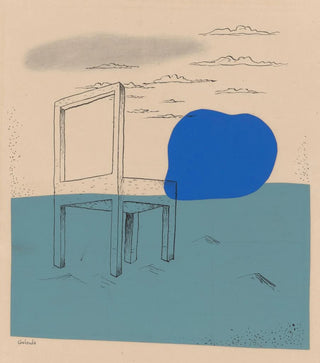Art print | Landscape with a chair - Mikuláš Galanda


View from behind

Frame (optional)
In the world of art, some works transcend time and space, offering a window into the soul of their creator. "Landscape with a Chair - Mikuláš Galanda" is one of those pieces that, through its apparent simplicity, invites us to deep contemplation. This painting, which evokes a silent dialogue between man and nature, transports us to a universe where each element, each color, seems charged with meaning. The chair, a symbol of rest and reflection, stands in the middle of a landscape that appears both familiar and mysterious. The light filtering through the trees, the shades of green and brown, remind us of the ephemeral beauty of life. Through this artwork, Galanda encourages us to question our own place in this world.
Style and uniqueness of the work
Mikuláš Galanda's style is distinguished by an approach that is both realistic and poetic. In "Landscape with a Chair," he manages to capture the essence of a suspended moment, where time seems to stand still. The forms are delicately sketched, the colors harmoniously arranged, creating an atmosphere of serenity and contemplation. The chair, much more than a simple object, becomes the focal point of the piece, an invitation to sit down and appreciate the surrounding beauty. The brushstrokes, both light and assertive, demonstrate technical mastery that gives the canvas emotional depth. Every detail, from the foliage to the cast shadows, contributes to a balanced composition where harmony reigns supreme. Galanda thus succeeds in transforming an ordinary landscape into a painting of great visual and symbolic richness.
The artist and his influence
Mikuláš Galanda is an emblematic figure of Slovak art, whose work has captured the essence of his era while fitting into a broader current of modern art. Influenced by the great masters of the past, he developed a personal style that combines tradition and innovation. His work reflects a deep sensitivity to nature, as well as an unceasing quest for beauty and harmony. By exploring themes such as solitude,

Matte finish

View from behind

Frame (optional)
In the world of art, some works transcend time and space, offering a window into the soul of their creator. "Landscape with a Chair - Mikuláš Galanda" is one of those pieces that, through its apparent simplicity, invites us to deep contemplation. This painting, which evokes a silent dialogue between man and nature, transports us to a universe where each element, each color, seems charged with meaning. The chair, a symbol of rest and reflection, stands in the middle of a landscape that appears both familiar and mysterious. The light filtering through the trees, the shades of green and brown, remind us of the ephemeral beauty of life. Through this artwork, Galanda encourages us to question our own place in this world.
Style and uniqueness of the work
Mikuláš Galanda's style is distinguished by an approach that is both realistic and poetic. In "Landscape with a Chair," he manages to capture the essence of a suspended moment, where time seems to stand still. The forms are delicately sketched, the colors harmoniously arranged, creating an atmosphere of serenity and contemplation. The chair, much more than a simple object, becomes the focal point of the piece, an invitation to sit down and appreciate the surrounding beauty. The brushstrokes, both light and assertive, demonstrate technical mastery that gives the canvas emotional depth. Every detail, from the foliage to the cast shadows, contributes to a balanced composition where harmony reigns supreme. Galanda thus succeeds in transforming an ordinary landscape into a painting of great visual and symbolic richness.
The artist and his influence
Mikuláš Galanda is an emblematic figure of Slovak art, whose work has captured the essence of his era while fitting into a broader current of modern art. Influenced by the great masters of the past, he developed a personal style that combines tradition and innovation. His work reflects a deep sensitivity to nature, as well as an unceasing quest for beauty and harmony. By exploring themes such as solitude,






